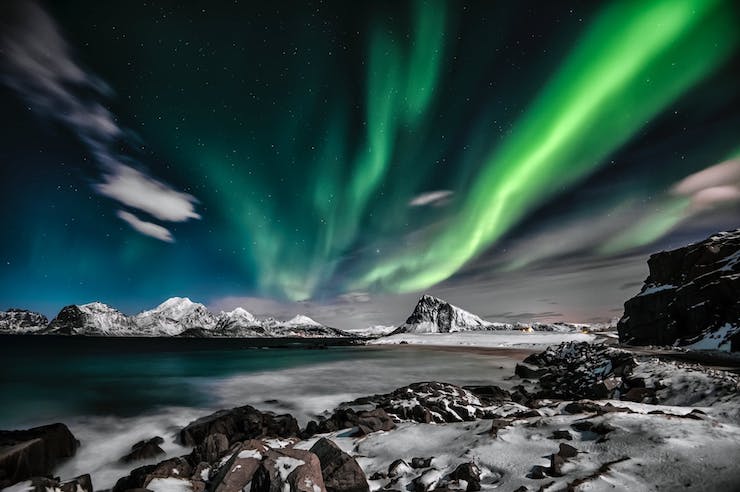Scientists Using Drones to Monitor Plants and Wildlife in the Arctic Tundra

For the most part, lush green vegetation is an indication of a healthy ecosystem. However, in the Arctic scientists have noticed a dramatic increase in the growth of plants that is making them concerned for the implications it could have on the earth. While Antarctica may not support plant and animal life that can be seen with the naked eye, the Arctic tundra has a vast array of plant and animal life. The plants that grow in this part of the world have evolved to be resilient to the extreme conditions of the Arctic. For years now, researchers from NASA, National Geographic, and universities around the world have been monitoring the growth rate of these tundra plants. The phenomenon is being called the Arctic Greening. On January 31, 2020 a paper on the advancing greening was published in Nature Climate Change, a scientific journal focused on climate changes and global warming.
The research that was compiled into the paper was funded by the National Geographic Society along with government agencies from Europe and North America such as the UK’s Natural Environment Research Council and NASA’s Arctic Boreal Vulnerability Experiment (ABoVE). What made the research gathered for this paper different was the team’s access to better tools. Lead author Dr Isla Myers-Smith, of the University of Edinburgh’s School of GeoSciences, said, “New technologies including sensors on drones, planes and satellites, are enabling scientists to track emerging patterns of greening found within satellite pixels that cover the size of football fields.”
The Arctic tundra covers an area of over 4.5 million square miles. Using satellites NASA has been recording the rate of plant growth throughout the massive area. Data has shown a rapid increase of green zones, but at the same time the images collected by these satellites do not provide enough detailed information to understand how and why these events are occurring. To be able to get to the root of the greening issue scientists need to go out into the field to closely study the plants. Doing this presents the teams with three major obstacles. The first being the sheer immensity of area needed to be studied. The second two issues stem from the fact that an Arctic winter means 24 hours of darkness while the summer is 24 hours of sunshine at a low angle that makes harsh shadows that are difficult to study in. So while researchers can gather ground based data from small plots of land, being able to understand what is happening on a grand scale has been out of their reach.
This is where drone technology has been able to fill the gap in data collection. Drones that are specially modified to withstand extreme temperatures and weather patterns can be sent out into a field to gather precise data. With thermal cameras, the drones can collect accurate images regardless of light and shadow. The drones can also cover football field sized areas to give researchers vast areas of comparison. The images collected by the drones can then be fed into a software program that analyzes them. Then all of the data sets collected by the drones, small ground teams, and satellites can be compared for a complete picture of what is causing the greening of the Arctic tundra, and the effects it cold have on the world.
Dr. Jeffrey Kerby from Dartmouth College was co-lead author on this study. He said, “Drone data can help us test the question of whether climate warming and resulting vegetation change on the ground are the major driver of Arctic greening signals observed by satellites. Drone data provide local information that can be translated to regional patterns to improve our understanding of tundra biome-wide greening trends.” The greening of the Arctic is a real global warming concern because it also means the carbon dioxide that has been trapped in the tundra’s permafrost will be released into the atmosphere. This release will lead to a cycle that will speed up global warming and further carbon releases.
In the introduction to the paper published in Nature Climate Change the authors explain, “As the Arctic warms, vegetation is responding, and satellite measures indicate widespread greening at high latitudes. This ‘greening of the Arctic’ is among the world’s most important large-scale ecological responses to global climate change.” One of the paper’s co- authors, Professor Gareth Phoenix, Professor of Plant and Global Change Ecology at the University of Sheffield, went on to say, “The greening of the Arctic has been one of the clearest consequences of climate change we can see in the natural world…we have a big challenge ahead if we are to predict what the future holds for Arctic ecosystems, as well as how changes there will affect the rest of the world.” With the data being collected with drones hopefully researchers will have the tools to make and act on global warming predictions.
|